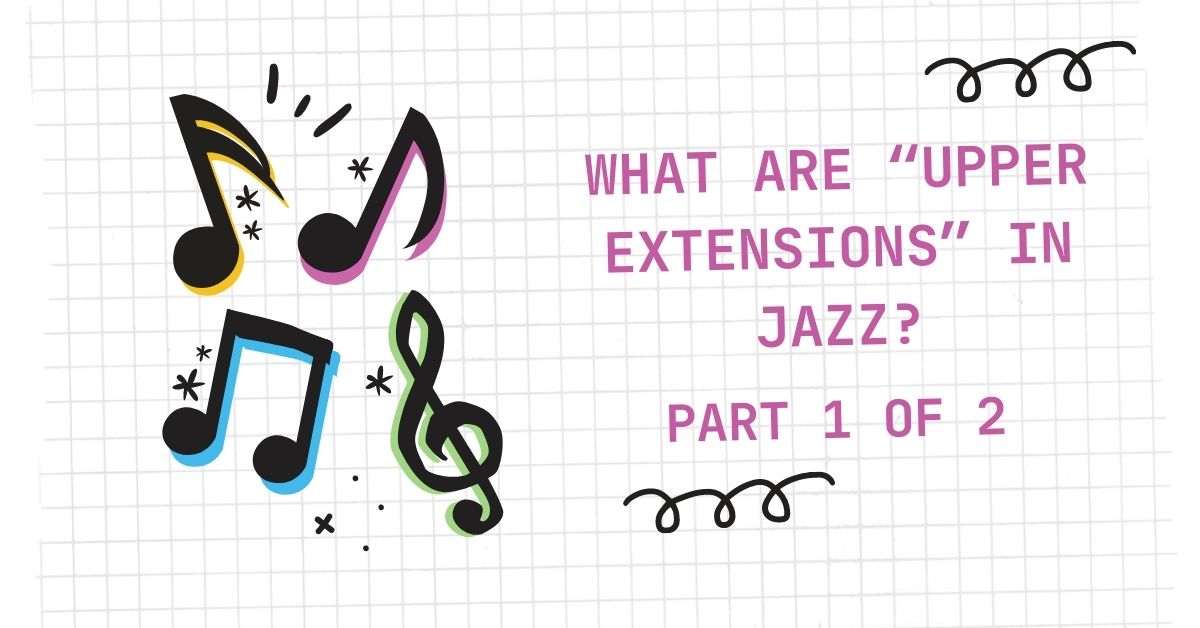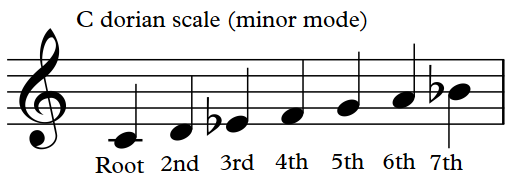What Are "Upper Extensions" in Jazz? Part 1 of 2

The term "upper extensions" has a very important meaning to musicians, particularly to jazz players. This is because "upper extensions" refers to a jazz theory concept that is critical to jazz improvisation and (for piano players) jazz comping. Sometimes it's not the concept of upper extensions that is confusing but rather the terminology. It might sound silly, but the big words that get used in jazz education, textbooks, and masterclasses can be scary-sounding, resulting in an obstacle to students' learning. But really, upper extensions are quite easy to understand and are part of what creates a sophisticated, professional sound in our improvisation and comping. This article will help you make sense of the terminology, theory, and how/when to use upper extensions.
What Does the Term "Upper Extension" Mean?
Upper extensions refer to notes other than the chord tones, which extend (or add tone-color - i.e., new sounds) to the chord. These notes are called upper extensions because they are referred to by numbers that are above the root, 3rd, 5th, and 7th.
A Theory Approach
Let's start simply by looking at a C minor 7 chord:
We refer to the notes which make up a particular chord as the chord tones which, for most 7th chords, are represented by the root/1st, 3rd, 5th, and 7th scale degrees. The scale degrees refer to the notes in the order in which they would appear in the scale. So in order to build a C minor 7 chord, we're really plucking the 1st, 3rd, 5th, and 7th scale degrees from a C minor scale:
But what about the 2nd, 4th, and 6th scale degrees that we didn't use when building the C minor 7 chord? Can we use them? Why or why not?
Let's think about the C dorian scale not in 1 octave, but 2 octaves:
When thinking of the root, 3rd, 5th, and 7th we think about the first octave of the scale. These three notes are the lower, foundational tones of the chord (think "foundation" = lower, solid structure, like a house). We can, in fact, use notes such as the 'D,' 'F,' and 'A' in a C minor 7 chord. Since those notes are not foundational chord tones, but rather extensions of the chord, we name them as they would be found in the upper (second) octave of the scale - the 9th, 11th, and 13th.
Does that mean that you can't refer to these notes as the 2nd, 4th, and 6th? No, of course not. You certainly can refer to these notes as the 2nd, 4th, and 6th, but in jazz and theory circles you are more likely to hear these notes referred to by their upper extension names - 9, 11, and 13. Sometimes popular sheet music shows chord symbols using the numbers 2, 4, and 6 to indicate extensions because this is generally considered easier for musicians to read. In reality, you should know that both 9/11/13 and 2/4/6 refer to the same extensions, but the more "theoretically pure" answer is that upper extensions are referred to by numbers greater than those used to identify the chord tones.
In Part 2 of our "Upper Extensions" discussion, we'll discuss how and when to use these tones.



